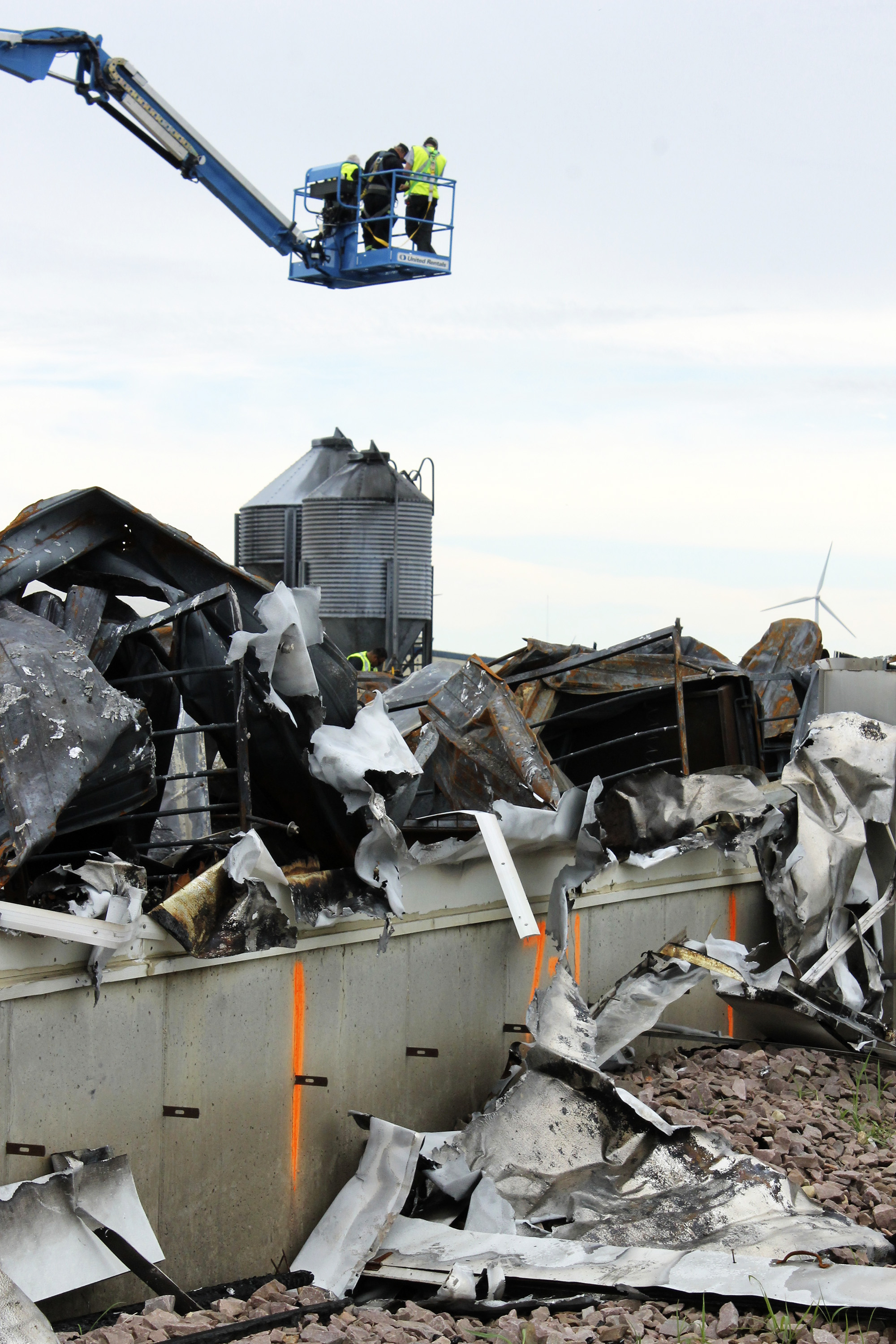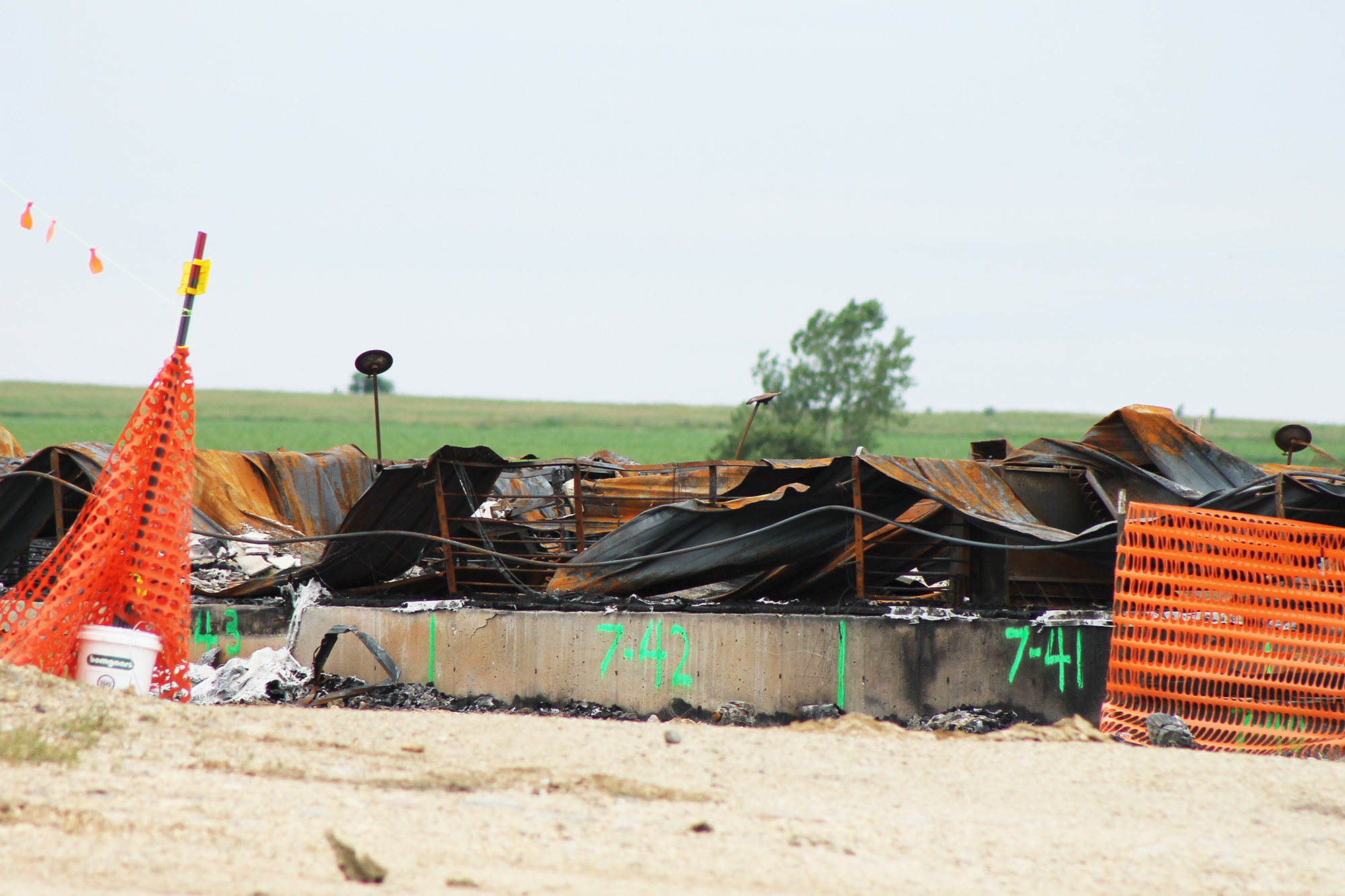 ,
, 
The State Fire Marshal last week wrapped up the investigation of a May 2015 swine building fire that took the lives of two local women.
The report, however, offers few specific answers.
“I have listed this fire as undetermined due to the extent of damage to artifacts located within the structure and that the artifacts collected have not been fully examined to date,” investigator Steve Kellen wrote in his final report released March 8.
Ten months after the deaths of Sharla Drew, 50, and Kristy Giesler, 32, both of Jasper, the state’s deputy fire marshal was able to eliminate some possibilities.
Kellen was at the scene of the wood frame, single-story metal structure fire within hours of its start on May 11, 2015.
The fire was reported at 9:21 a.m. at the nursery facility owned by New Horizon Farms of Pipestone. It’s located four miles west of Jasper on 251st Street in Rose Dell Township.
The location contains four nursery barns with the fire contained to the western-most facility or Barn No. 4.
Witnesses noticed nothing unusual that morning
The nine-page report states six people, including Giesler and Drew, were working various jobs at the facility.
Witnesses interviewed for the investigation include barn manager Crystal Enninga, employees Bruce Drew and Scott Heidebrink, and driver David Jagow.
The report states that on the morning of the fire, the four along with Sharla Drew were unloading 160 pigs into Barn No. 2 when the pens became full.
Sharla Drew went to Barn No. 4 to turn on the heat and unload the rest of the pigs in Room No. 7, or the north half of the barn.
Giesler, who worked for VanHawk Pressure Washing of Jasper, had recently finished cleaning Room No. 7.
“The flame, char and heat patterns listed were possible indicators that the fire ignited within Room No. 7 by an unknown source,” the report stated, noting that Giesler might not have been aware of the fire at first.
Bruce Drew called 911 after he saw smoke coming from Barn No. 4. He stated he was unaware that his wife was in the building.
“Employees observed the west wall almost completely engulfed in flames while only smoke was initially coming from the exhaust fans along the south end of the east side,” the report stated.
Heidebrink attempted to enter the structure through an entry/exit door near the center of the barn’s east side. He said he was driven back by smoke and heat as he called for the victims and was unable to see inside.
No one reported hearing an explosion or witnessing anything unusual that morning.
Victims were found together in end of barn
The victims were found together in the east alley of Room No. 8 in the south half of Barn No. 7. The report noted exit windows located on the barn’s east and west sides were 4 feet, 3 inches above the floor, behind the steel livestock separation pens.
An electric water heater was located in the barn’s southeast corner along with two main breaker panels. Kellen ruled the water heater out as a cause because “flame and heat patterns advanced to the water heater,” the report stated.
“At this time, it is unknown as to whether the electrical panels were involved in the cause of the fire,” the report added.
The 41-by-246-foot barn was constructed in 1997-98 and was heated by two LB White liquefied petroleum gas heaters suspended in Rooms 7 and 8.
A gas riser was located near the east end of the north wall and distributed propane to the heaters from an outdoor 10,000-gallon tank located more than 200 feet northeast of the building.
Kellen noted there was no bulkhead or tank protection located at the tank.
The report also noted charred remains of wooden framing were found around all four of the manure cleanout pits except the one located by Room No. 7.
“The wood-constructed frame and deck on this pit was completely destroyed,” the report noted.
Closer inspection of this pit area revealed a cracked foundation and partially collapsed concrete wall.
“Where the wood structure was destroyed appeared to contain the greatest damage as compared to other areas located along the outer perimeter of the structure,” the report read.
Examination of the 8-foot deep manure pit revealed a crust being present. Manure measured 4 to 6 inches in various areas including the cleanout pits.
The pressure washer Giesler was operating was contained in a Chevrolet pickup truck parked outside the building’s east side near the entrance/entry room.
Heidebrink reported the washer was running when the fire was discovered.
“Examination of the vehicle indicated the damage was caused by fire originating within the structure and extending outward to the vehicle,” the report stated.
While Kellen’s report indicated he has closed his fire investigation, the evidence that was collected and documented by insurance company representatives “is held in their possession for a possible joint inspection at a later to be determined date and time.”
Investigation began
10 months ago
According to State Fire Marshall public information officer Jen Longaecker, it is not unusual for investigations to reach closure months after the incident.
“Fire investigation is a very complex process, and not every fire is the same,” she wrote by email.
“Our investigators must follow guidelines of the most current edition of the National Fire Protection Association Guide for Fire and Explosion Investigations. There are hundreds and hundreds of guidelines.”
She said complicating the investigation is the type of building, the number of injuries or fatalities, number of jurisdictions and whether or not there is pending litigation.
“These investigators are working with evidence that is many times burned beyond recognition,” Longaecker added. “They need to sift through ashes and dust to find what they are looking for — sometimes something as small as a grain of sand. This evidence is sent to a lab where it is needs to be analyzed, another step that takes time.”


